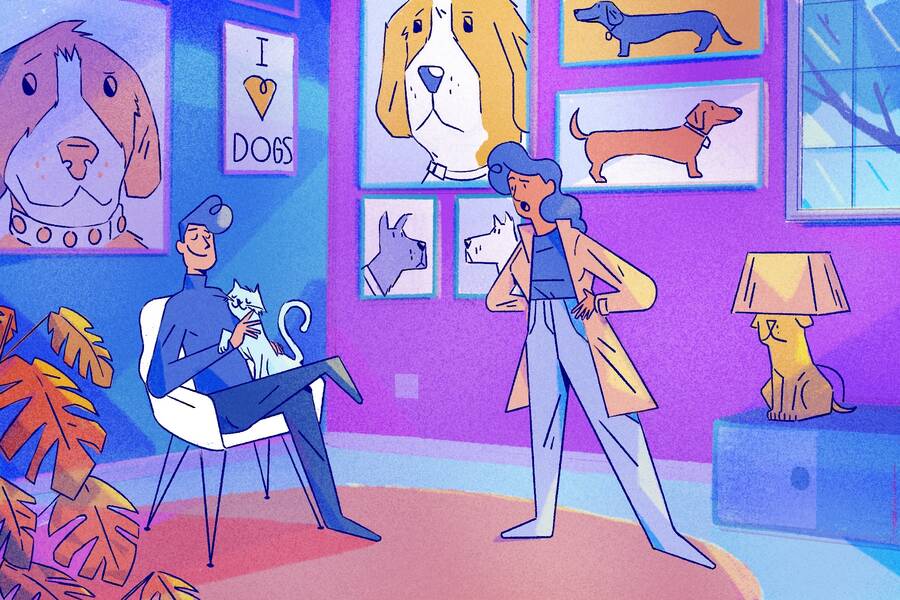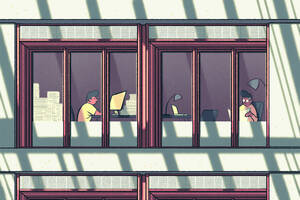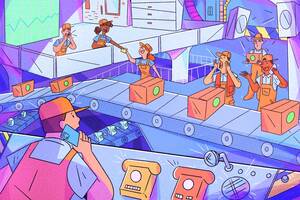Organizations Apr 1, 2024
Why Artists Are Punished More Harshly Than Scientists for the Same Misconduct
It’s tough to separate the artist from the art, a new study finds—but easier to separate the scientist from the science.

Yevgenia Nayberg
Boycotted, canceled, suspended, fired: these days, people in power charged with misconduct such as sexual harassment are increasingly likely to face professional consequences.
But how much punishment perpetrators receive—and how much people think they should receive—isn’t just dependent on the severity of their actions. It can also be related to their field.
Artists receive harsher professional punishment for misconduct than scientists, a new Kellogg study reveals, because people find it harder to mentally separate artists’ work from their moral conduct (or misconduct).
That is, people can “morally decouple” a scientist from their research—but not an artist from their art. The result holds true even if someone isn’t an artist but is perceived to be more artistic.
“Who are we willing to ‘cancel’ versus let slide?” says Jacob Teeny, an assistant professor of marketing at Kellogg and a coauthor of the study. “If you’re perceived to be more scientific, you might face less-severe professional consequences for misconduct, since people are more willing to separate the work from the person.”
Art—but not science—is viewed as an extension of the self
Previous research has shown that, in general, the less we morally decouple someone’s work from their personal conduct, the harsher the consequences for wrongdoing we want to see. This earlier work examined how moral decoupling affects perceptions of professional athletes and politicians, which led Teeny and Siev to wonder how scientists and artists might be viewed.
In search of that theoretical understanding, the researchers created a study in which participants judged two different perpetrators—an artist and a scientist—who had engaged in the same type of misconduct.
For this experiment, 567 participants read a news article about either a prominent academic artist or prominent academic scientist who had committed sexual misconduct. Participants then reported their support for different consequences the professor might face, including boycotting his work, removing his books from bookstores, and preventing him from speaking on college campuses.
“Even if you’re not an artist or a scientist specifically, if you and your career are framed as requiring an artistic eye, you’re going to face more professional consequences.”
—
Jacob Teeny
Participants also reported whether the perpetrator’s actions changed their assessment of his work and whether reports like this should affect views of his work—measures the researchers used to show whether participants could “morally decouple” the perpetrator’s conduct from his work.
Though both news articles had identical details about the misconduct, research participants supported harsher professional consequences for the artist than the scientist. They also reported that their assessment of the artist’s work had changed more drastically.
“People had a harder time separating the work of the artist from the artist themself,” Teeny says.
But Teeny and Siev weren’t yet fully convinced that moral decoupling was the only thing going on—maybe participants just felt that science is more important than art (and therefore, that scientists deserve more lenience). In a society where government funding for health sciences is 50 times greater than spending for humanities, it’s possible people might be more willing to give scientists a pass.
So, they asked participants about the perceived value of the artist’s and scientist’s work. Still, “even when controlling for that, it did not explain this effect,” Teeny says.
“We knew we were onto something big”
“After we did the first study looking at artists versus scientists, we thought, ‘Oh, wow,’” Teeny says. “The effect was so strong. We needed to understand it more theoretically and understand its implications in the real world.”
To examine those real-world implications, Teeny and Siev consulted the Academic Sexual Misconduct Database, which has gathered information on four decades of sexual-misconduct investigations at U.S. universities.
They focused their analysis on 619 investigations in which the faculty member’s academic field and the investigation’s outcome were known. The punishments these scholars faced ranged from receiving a warning to being barred from leadership to being fired.
Since there is no independent system for calling a field art or science, nor for rating punishments, the researchers ran several experiments in which they asked participants to rate each field, like philosophy, psychology, or chemistry, on a scale of 1 (art) to 7 (science). Other participants rated the severity of the professional consequences the academics in the dataset had received.
The researchers found several factors that influenced the severity of punishment, including seniority: higher-ranked faculty (full professors, department chairs, deans, etc.) faced lighter professional consequences than junior faculty, lecturers, and adjuncts across all fields.
And just as the researchers had observed in the first study, whether the field was perceived as more artistic or more scientific also significantly predicted the severity of professional consequences. Professors in fields seen as more artistic faced harsher punishments than those in fields seen as more scientific for the same kind of offense.
An artistic coach faces harsher punishment than a scientific one
The researchers found that this phenomenon extended even to professionals within a discipline, depending on whether their work was seen as more artistic or scientific in nature.
Participants were recruited to read a news article about a tennis coach who had also written several books. Some read that the coach had an “artistic intuition”; others read that he had a “scientific approach.” Participants then read a second article that reported the coach cheated the government and his co-investors out of money.
Once again, participants supported harsher professional consequences for the “artistic” coach than the “scientific” coach.
“Even if you’re not an artist or a scientist specifically, if you and your career are framed as requiring an artistic eye, you’re going to face more professional consequences,” Teeny says.
Keep moral decoupling in mind when doling out punishment
Teeny thinks the study offers important lessons for leaders in academia and beyond.
For example, managers who oversee teams that include both “creatives” and “quants” should be mindful of the effects of moral decoupling and ensure that punishment for misconduct is administered equitably.
“Supervisors should keep this mind to hold ‘scientific’ employees accountable for their behavior,” he says.
Emily Ayshford is a freelance writer in Chicago.
Sieve, Joseph J., and Jacob D. Teeny. 2024. “Personal Misconduct Elicits Harsher Professional Consequences for Artists (vs. Scientists): A Moral-Decoupling Process.” Psychological Science.



